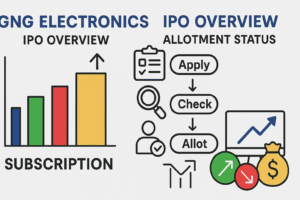
Aditya Infotech IPO: Is It a Risky Bet for Indian Investors in a Competitive Market?
A Deep Dive Into Growth, Margins, Regulations & Future Prospects of Aditya Infotech IPO
IPO Overview: Aditya Infotech’s Strategic Leap
Aditya Infotech, one of India’s leading electronic surveillance and security product companies, is making headlines with its initial public offering (IPO). The promoter group’s stake is set to fall from 95% to 77% post-issue, signaling a significant step to unlock value, expand visibility, and fuel growth ambitions in the security solutions segment.
The company’s portfolio spans both its own branded products and the trading of renowned international brands, notably Dahua Technology from China. This dual approach has supported steady growth, but is now facing a market in transition.
- Promoters’ stake after IPO: 77%
- Annual revenue (FY25): ₹3,111.8 crore
- Annual revenue CAGR FY23–FY25: 16.7%
- Key verticals: IP-driven surveillance, security tech, distribution
- Recent strategic move: Acquired full control of JV with Dixon Technology (July 2024) via a share swap
The IPO comes at a crucial juncture as government norms change—and Indian manufacturing may gain ground over Chinese imports, presenting both growth opportunities and short-term uncertainties.
Market & Industry Dynamics
The Indian security and surveillance market is fiercely competitive, priced keenly with thin operating margins. Aditya combines original product manufacturing with distributorship of global players, best illustrated by its partnership with Dahua Technology.
Regulatory Tailwinds: STQC Norms
- Expected decline in Chinese product trading revenue
- Potential expansion of addressable market for Indian manufacturers
- Industry-wide shift towards local compliance and value addition
However, the magnitude and timeline for these benefits remain uncertain. Companies must navigate disruption in established supply chains and changing client preferences.
Competitive Landscape
Aditya has no direct listed peers, but the entire sector is marked by commoditization pressures, import dependency, and evolving customer needs, demanding constant innovation and operational efficiency.
Key Financials and Valuation
| Metric | FY24 | FY25 |
|---|---|---|
| Revenue (₹ crore) | 2,570.5 | 3,111.8 |
| EBITDA Margin (%) | 8-9 | 8-9 |
| Net Profit (₹ crore) | 102.8 | 351.4* |
| Net Debt (₹ crore) | 334.8 | 231 |
| P/E (Trailing, based on FY24) | 68.7 | — |
*FY25 net profit includes a one-time fair value gain of ₹248.6 crore from JV deal with Dixon Technology.
Trading vs. Manufacturing Revenue
- Trading (mainly Dahua): 24.7% of FY25 revenue (downward trend expected)
- Own products: Higher margins, will become more dominant
- Trading margin: Typically ⅓ of own products’ margin
Valuation caveat: The sharp jump in FY25 profit (from ₹103 crore in FY24 to ₹351 crore) is driven by a one-time JV gain. The trailing P/E based on sustainable profits (FY24) is 68.7x, signaling a premium valuation.
Risks & Opportunities
Risks
- Narrow Margins: Core EBITDA margin remains in single digits (8–9%), reflecting price wars and high competition.
- Earnings volatility: FY25 profit overstates underlying capability due to a one-time JV fair value gain.
- Dependence on China (Dahua): 24.7% of revenue (FY25) tied to imported products facing regulatory headwinds.
- Uncertainty over STQC benefits: Positive impact is likely, but full effect will take several quarters.
- Valuation risk: High trailing P/E (68.7 based on FY24) leaves little room for disappointment.
Opportunities
- Indian manufacturing push: New standards may boost demand for domestically made surveillance equipment.
- Margin upside: Lower share of low-margin trading revenue may lift overall profitability, as the own-products business expands.
- Stronger balance sheet: Net debt has reduced from ₹334.8 crore to ₹231 crore between FY24 and FY25.
- Brand and distribution strength: Widespread network and established partnerships offer resilience as market evolves.
Investor Outlook & Final Verdict
Aditya Infotech’s IPO presents a high-risk, high-reward equation. The company stands at a regulatory inflection point, on the cusp of possibly significant local market expansion if STQC norms play out as hoped.
Yet, several caution flags remain:
- EBITDA margin is thin and business deeply competitive
- Valuations are premium, factoring in future growth upfront
- Transformation from trading-led to brand-led model still in progress
- Short-term earnings could be volatile as market adjusts to regulatory shifts
For conservative or short-term investors, patience may be prudent until margin profile and regulatory benefits become clearer.
Frequently Asked Questions (FAQ)
Shanti Gold IPO Review: Strong Retail Demand vs Poor QIB Response.







Post Comment